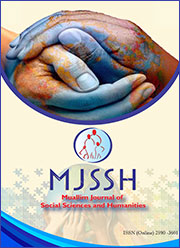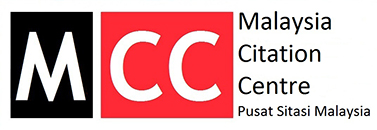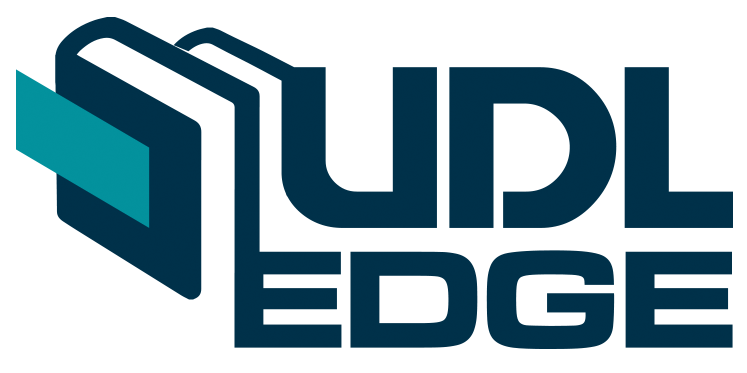Inculcate historical thinking skills in teaching history
Keywords:
Historical thinking skills, History Teaching, Critical ThinkingAbstract
This paper discusses historical thinking skills inculcation in teaching History. The History subject of the Primary School History Curriculum (KSSR) was first introduced as a subject at the primary level in 2013. The History subject of the Primary School History Curriculum (KSSR) was first introduced as a subject at the primary level in 2013 for Level 2 starting Year 4 and is a core subject that must be studied. This aims to foster students' understanding of History subjects at an early stage so that students acquire and master the knowledge and skills of History. The research method is the combination of components or elements to form a connected whole. The findings show that before the New Primary School Curriculum (KBSR) which was introduced in 1983, the History subject formerly known as Chronicles was taught in primary schools to Grade 4, Grade 5, and Grade 6 students. In KBSR, elements of history were included in the subject Local Studies studied at Level 2 for Year 4, Year 5, and Year 6. The Malaysian Ministry of Education (KPM) outlines that the Primary School Standard Curriculum (KSSR) is formulated based on the principles of Rukun Negara (Pillar of the Nation), the National Philosophy of Education (FPK) and the pillars of KSSR which are i) communication; ii) Physical & Aesthetic Development; iii) Humanity; iv) Personal Skills; v) Science and Technology and vi) Spirituality, attitudes, and values. The KSSR History subject is also formulated on the same principle by emphasizing the cognitive, effective, and psychomotor domains as well as applying added value of the new millennium such as thinking skills, information, and communication technology skills, multi-intelligence skills, future studies, and lifelong learning.
References
Ahmad Rafaai (2011). The effectiveness of teaching and learning history based on multicultural towards national integration in Malaysia. Procedia Computer Science. Volume 3, 1588-1596
Baharuddin Jabar. (2006). Students' Perspectives on Teaching Higher Level Thinking Skills in Teaching and Learning History in Secondary Schools: A Case Study in the Lower Perak District. Tanjung Malim: Department of History, Faculty of Social Sciences and Humanities, UPSI
Maiia. V. M., et.al. (2020). Personalization of learning through adaptive technologies in the context of sustainable development of teachers’ education. E3S Web of Conferences, 166(4). January 2020, 10015.
Ekecrantz, S., Parliden, J., & Olsson, U. (2015). Teaching-Research Nexus or Mock Research? Student Factors, Supervision and the Undergraduate Thesis in History. In D. Ludvingsson, & A. Booth (Eds.), Enriching History Teaching and Learning (pp. 15-33). Sweden: Linkoping University.
Endacott, J., & Brooks, S. (2013). An Updated Theoretical and Practical Model for Promoting Historical Empathy. Social Studies Research and Practice, 8, 41-58.
Havekes, H., Coppen, P.-A., Luttenberg, J., & Van Boxtel, C. (2012). Knowing and doing history. A conceptual framework and pedagogy for teaching historical contextualisation. International Journal of Historical Learning, Teaching and Research, 11(1), 71-92.
Kementerian Pendidikan Malaysia (KPM-Ministry of Education Malaysia). (2013). Primary School Standard Curriculum Document. Year 4 History.
Ling, T.Y and Wah L.L (2015) Profile of teachers' level of concern towards primary school standard curriculum innovation (KSSR) based on the concern-based adoption model (CBAM). Asia Pacific Journal of Curriculum & Teaching July 2015, 3(3). MA: Blackwell Publishers Ltd., 765 – 783
Marzano, R. J. (1988). Dimensions of thinking: A framework for curriculum and instruction. The Association for Supervision and Curriculum Development, 125 N. West St., Alexandria, VA 22314-2798.
Mohd Mahzan Awang, Abdul Razaq Ahmad, Noria Munirah Yakub, Ahmad Ali Seman. Historical Thinking Skills among Pre-Service Teachers in Indonesia and Malaysia. Creative Education, 2016, 7, 62-76. http://dx.doi.org/10.4236/ce.2016.71007.
Noria Munirah and Anuar Ahmad (2015). Historical thinking skills (HTS) among prospective public higher education institute (IPTA) teachers. www.academia.edu. accessed on 30th Oct 2016.
Nurhijrah binti Zakaria, Anisah binti Harun, Mazuki b. Abd Razak, Hasnul Hadi b. Tengah, Hamidi b Salleh, Rosmani binti Ali and Nazli bin Hamzah (2016). Analysis of the needs for the construction of the teaching module of Historical Thinking Skills in the KSSR History subject Year 4. Muaddib Journal. X:84-101
Nurhijrah binti Zakaria, Anisah binti Harun, Rosmani binti Ali, et.al. (2018). The Integration of Historical Thinking Skills in History Teaching by the Trainee Teacher of the History Education Program During Practicum. IPGM Academic Research Journal. Vol.3 No.1, 101-120.
Paul, R & Elder. L. (2006). Analytic Thinking: The Thinker's Guide. The Foundation for Critical
Sanders, M., & Ngxola, N. (2009). Identifying teachers' concerns about teaching evolution. Journal of Biological Education, 43(3), 121-128
Seixas, Peter. (1996). Conceptualizing the Growth of Historical Understanding. The Handbook of Education and Human Development. Olson, D.R. and Torrance, N (eds.). Cambridge, MA: Blackwell Publishers Ltd., 765 – 783.
Shulman, L.S. (1987) Knowledge and teaching: Foundations of the new reform. Harvard Educational Review 57(1):1-21.
Sokolov, A. (2015). The Development of Students’ Critical Thinking through Teaching the Evolution of School History. Sweden: Linkoping University, 85-100.
Snyder, L. G., & Snyder, M. J. (2008). Teaching Critical Thinking and Problem-Solving Skills. The Delta Pi Epsilon Thinking Journal, 2, 90-99.
Van Sledright. B.A(2004). What does it mean to think Historically... and how do you teach it? Social Education. 68(3):230-233.
Virta, A., & Kouki, E. (2014). Dimensions of Historical Empathy in Upper Secondary Students' Essays. Nordidactica-Journal of Humanities and Social Science Education, 2, 137-160.
Wineburg, S. (2001). Historical Thinking and Other Unnatural Acts: Charting the Future of Teaching the Past (Critical Perspectives on The Past). Philadelphia, PA: Temple University Press.
Zahara Aziz and Nik Azleena Nik Ismail. (2007). A survey of history teachers' willingness to apply historical thinking skills to students. Journal of Education 32, 119-137.
Zarina Md. Yasin (2013). Evaluation of the Application of Historical Thinking Skills (HTS) at the Upper Secondary Level. Thesis Dr. Philosophy: National University of Malaysia.
DSKP. (2013). Dokumen Standard Kurikulum dan Pentaksiran (DSKP) Sejarah KSSR. Kuala Lumpur: Malaysia Ministry of Education.
Clarke, S. (July 23, 2020). Historical Thinking Concepts. Canada: The Canadian Encyclopedia, Historica Canada.
Thorp, R. & Persson, A. (2020). On historical thinking and the history educational challenge. Educational Philosophy and Theory Volume 52, 2020 - Issue 8.
Published
 Abstract Display: 236
Abstract Display: 236  PDF Downloads: 323
PDF Downloads: 323 













 This work is licensed under a
This work is licensed under a